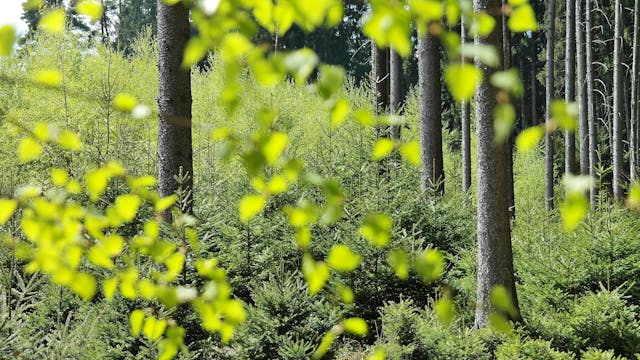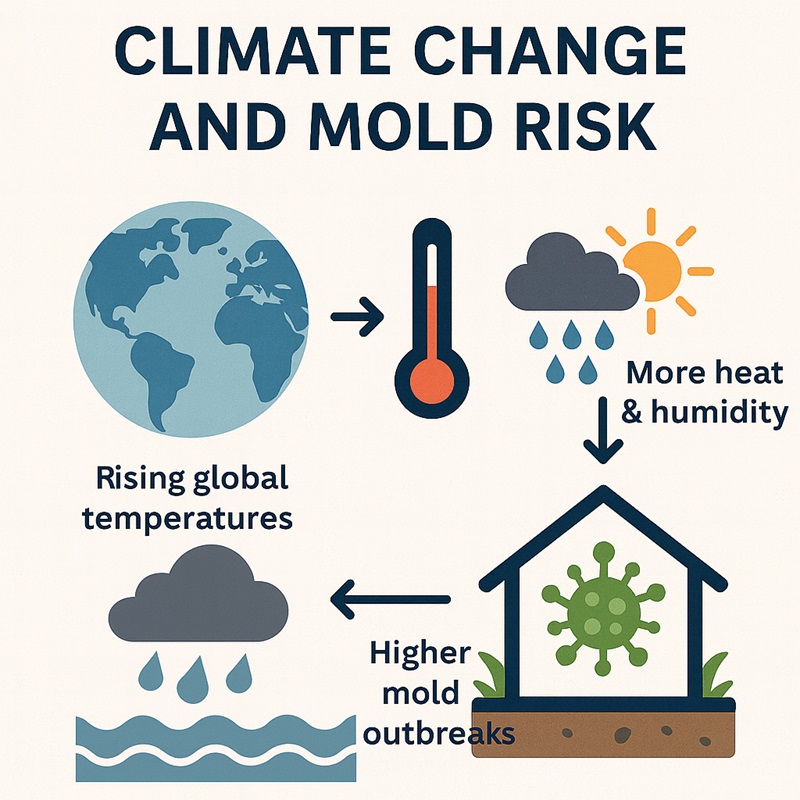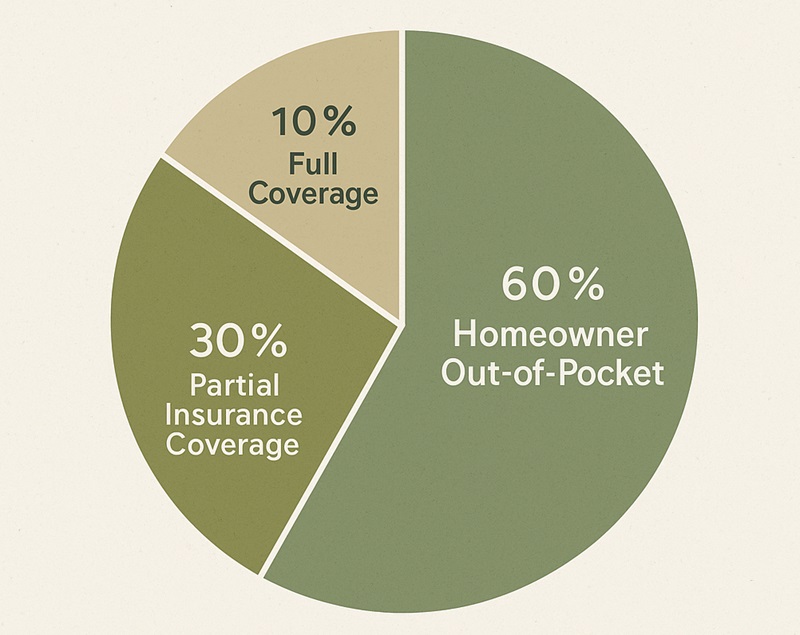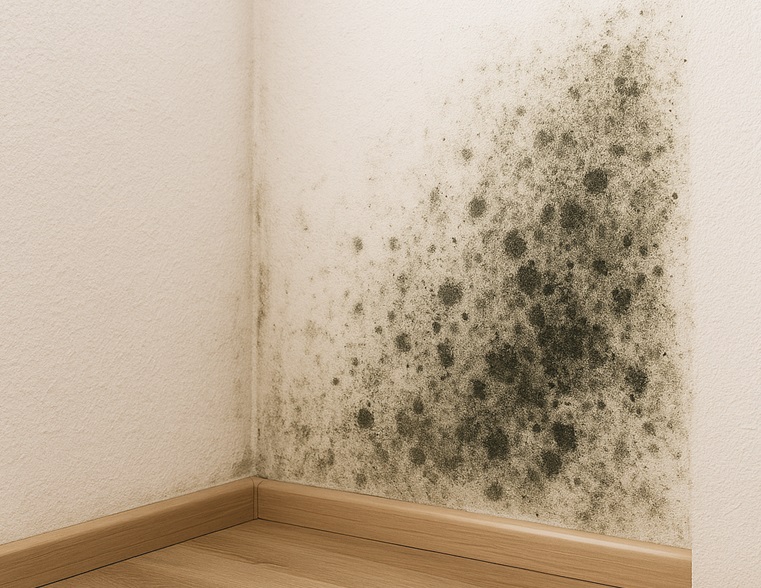Mold is more than just an ugly spot on the wall. It shows that something is wrong with the balance inside a home. As houses become more airtight to save energy, and as climate change raises humidity worldwide, moisture problems are growing. This leads to more mold indoors.
Mold does not only harm walls and furniture. It also harms the environment. Mold problems cause waste from damaged materials, add to indoor air pollution, and increase carbon emissions from repairs and rebuilding.
When homeowners see mold as both a health issue and an environmental issue, they can make smarter, greener choices in design, care, and repair.
The Science Behind Mold and Moisture
Mold is a fungus that breaks down natural materials like leaves, wood, and paper. Outdoors, this process helps nature. Indoors, it causes damage.
When humidity rises above 60%, mold spores quickly grow on damp surfaces like drywall, carpets, or wood. In just 24–48 hours, a small moisture issue can turn into a serious infestation.
The U.S. Environmental Protection Agency (EPA) has found that indoor air is often more polluted than outdoor air. One reason is mold. Spores, dust, and gases from paints or sealants build up inside enclosed spaces. These can irritate lungs and lower air quality.
In short: moisture is the trigger, and mold is the warning sign. High humidity or poor airflow means the home’s environment is out of balance and needs fixing.
The Environmental Cost of Mold Damage
Mold damage affects more than health and home value — it also harms the planet. When mold spreads, items like drywall, carpets, insulation, and furniture often have to be thrown away. Most of these materials cannot be recycled, so they end up in landfills.
The EPA notes that construction and demolition waste in the U.S. is over 600 million tons a year. Mold-related replacements add to this huge problem. Each time a wall or floor is replaced, more raw materials must be cut, processed, shipped, and installed. All of this creates a big carbon footprint.
Energy use during mold cleanup also adds to the impact. Machines such as dehumidifiers, heaters, and air scrubbers may run for days or weeks to dry a home. This uses a lot of electricity, especially in humid areas. If strong chemicals like bleach are used, they can add more pollution through fumes or runoff.
By the time repairs are done, the total environmental cost — waste, energy, and chemicals — can be as high as a small home renovation. Mold is not just a house problem. It is a sustainability challenge.
The Economic and Social Costs of Mold
The harm mold causes is not only environmental. It also brings heavy financial and social costs. In the U.S., homeowners may spend between $1,500 and $10,000 on cleanup, depending on how severe the problem is. Insurance claims related to mold add up to billions each year. Worldwide, mold after floods is one of the biggest and most expensive recovery issues.
Mold also affects people unequally. Low-income families often live in older homes with poor ventilation and weak insulation. These homes are more likely to get damp, but owners may not have the money for professional cleanup. This leads to more exposure to mold, more repairs, and higher costs over time.
Mold is not just a maintenance issue. It is also about fairness, health, and resilience. Looking at both the environmental and social costs shows why prevention and sustainable solutions are so important.
Moisture: The Hidden Environmental Trigger
Moisture is often the hidden cause behind mold and wasted energy in homes. Leaky roofs, blocked gutters, and poor insulation create damp spaces where mold thrives. But the problem doesn’t end there. These same issues also lead to big energy losses.
The U.S. Department of Energy says that 25% to 40% of a home’s heating and cooling is lost through air leaks and moisture problems. Wet insulation loses its ability to hold heat, forcing HVAC systems to work harder. This raises energy bills and increases carbon emissions.
Moisture also weakens building materials, making them fail faster. Damaged walls, floors, or insulation often need early replacement. This cycle of dampness, mold, and repair wastes resources that could be saved with better design and prevention.
Early detection often starts with your nose — mold gives off distinct odors that can be recognized before it becomes visible. Learn more in our guide What Does Mold Smell Like?
Climate Change and Mold Resilience
Mold is not just a household issue — it is also a climate challenge. Rising global temperatures bring heavier rain, flooding, and longer humid seasons. These conditions are fueling mold outbreaks around the world.
In hurricane-prone regions like the U.S. Gulf Coast, entire neighborhoods have become unlivable after floods because of mold. In parts of Asia and Africa, higher humidity is creating long-term dampness in homes that were never designed to handle it. This stresses health systems, raises repair costs, and increases demand for building materials.
New solutions are now being used in sustainable design. Breathable walls, rain-screen cladding, and passive ventilation help homes resist moisture while staying energy-efficient. Looking at mold through a climate lens shows how it links to global sustainability and disaster preparedness.
Health and Ecosystem Impacts
Mold is bad for people and for the planet. The World Health Organization (WHO) says that 1 in 5 homes worldwide has serious damp problems. This puts millions at risk of breathing issues like coughing, wheezing, sinus pain, and even long-term asthma. In some cases, mold can weaken the immune system.
The damage doesn’t stop indoors. When mold grows on carpets, walls, or furniture, these items are often thrown away. Many of them release chemicals such as formaldehyde or phthalates into the soil and water as they break down in landfills.
Even the air inside is affected. Mold spores and gases add to indoor air pollution. The EPA lists poor indoor air as one of the top five environmental health risks.
Sustainable Strategies for Prevention
Stopping mold before it starts is better for health and the environment. Simple, eco-friendly steps include:
- Improve ventilation – Use energy-saving fans in kitchens and bathrooms. Open windows for cross-breeze or use air exchangers to balance humidity.
- Use green dehumidifiers – Solar-powered or desiccant models save energy compared to standard ones.
- Insulate with natural materials – Hemp, cork, and cellulose resist moisture and are biodegradable.
- Pick low-VOC finishes – Paints, caulks, and sealants with fewer chemicals keep air cleaner.
- Track humidity with smart sensors – These tools can alert you early and adjust airflow before mold shows up.
- Design for drainage – Sloped yards, clear gutters, and vapor barriers keep water away from foundations.
Each of these habits lowers mold risk while also cutting waste and saving energy. That’s a win for both your home and the planet. For more insights, check out our related article, Does Bleach Kill Mold?, which explains when bleach works and when it doesn’t.
Green Building Standards and Certifications
Managing mold and moisture is a core part of green building today. Certifications like LEED, WELL Building Standard, and Passive House all include rules about airflow, safe materials, and moisture control.
- LEED highlights insulation that resists moisture and low-VOC paints.
- WELL focuses on indoor air quality and balanced humidity.
- Passive House, common in Europe, uses airtight designs with controlled ventilation. This keeps homes mold-free without wasting energy.
Choosing certified homes or renovations helps protect your health and the planet at the same time. These systems show that building green also means preventing mold.
Responsible Remediation and Restoration
If prevention fails and mold grows, cleanup is needed. Traditional methods often use harsh chemicals and lead to large amounts of waste. A greener approach reduces both.
Eco-friendly remediation may use plant-based cleaners, HEPA air filters, and a “restore first” mindset. Instead of tearing out all materials, experts may clean, dry, and reuse as much as possible.
Some industry providers, such as deltonamoldremoval.com, highlight approaches that incorporate non-toxic cleaners, green-certified products, and waste-conscious methods. . In some cases, materials can be recycled: wood can be cleaned and resealed, while metal fixtures can be sanitized and reused. Every salvaged piece means less landfill waste and fewer emissions from making new products.
Eco-Friendly DIY vs. Professional Help
Prevention is always best, but sometimes mold appears. Homeowners often wonder: clean it themselves or call experts?
DIY cleaning with vinegar, baking soda, or hydrogen peroxide can work for small spots. But these methods do not reach deep mold in walls, drywall, or insulation.
For larger problems, professional teams are better. Eco-friendly services use tools like botanical cleaners, dry ice blasting, and HEPA filters. These methods cut waste and reduce chemical use. Some companies also repair and restore instead of throwing materials away.
The most sustainable plan is often a mix: quick DIY cleaning to stop mold from spreading, followed by green-certified pros if the problem is bigger.
A Holistic View: Home and Planet Health
Mold and moisture are not just house issues. They show a bigger imbalance — in air flow, building design, and even global sustainability. A leaky window or damp wall adds to both home damage and environmental strain.
By fixing root causes like humidity, poor airflow, and weak materials, homeowners protect health, save their property, and lower carbon emissions. Prevention and green cleanup together break the cycle of waste.
FAQs
Does mold add to climate change?
Yes, indirectly. Mold leads to wasted materials, energy-heavy cleanup, and chemical use — all of which add carbon emissions.
Is mold removal bad for the environment?
Traditional methods can be, especially when they use strong chemicals or demolition. Eco-friendly cleanup uses botanical cleaners, safe methods, and less waste.
What is the most eco-friendly way to prevent mold?
Keep air moving, use natural insulation, watch humidity, and choose low-VOC paints and finishes.
Can green design stop mold completely?
No design removes all risk, but green standards cut it greatly by balancing tight building envelopes with proper ventilation and moisture control.
Conclusion
Mold may begin in one room, but its impact spreads far — to landfills, power use, and even the air we breathe. Every extra wall torn down, every chemical used, adds to the planet’s load.
Homeowners who act early with ventilation, eco-friendly materials, and green cleanup protect both their home and the Earth.
Protecting the planet starts where we live — one dry, healthy home at a time.






